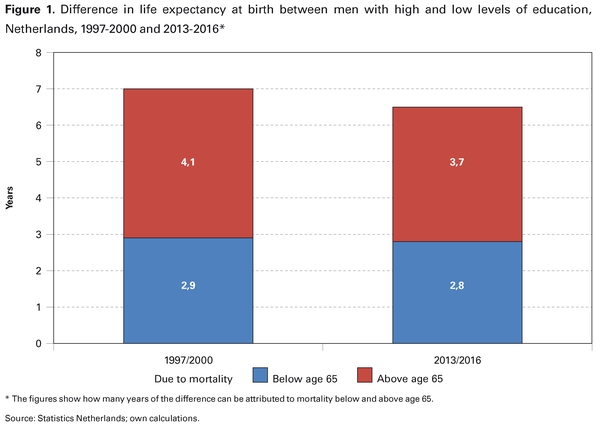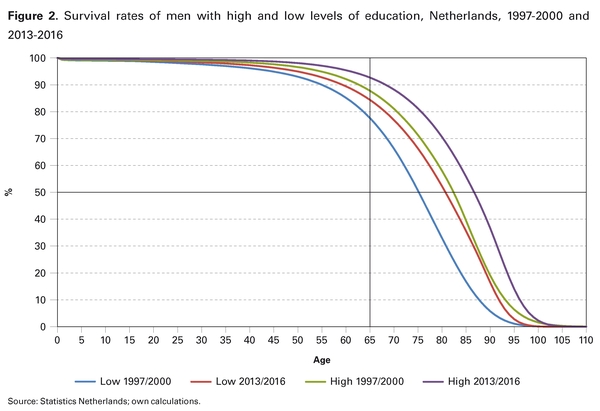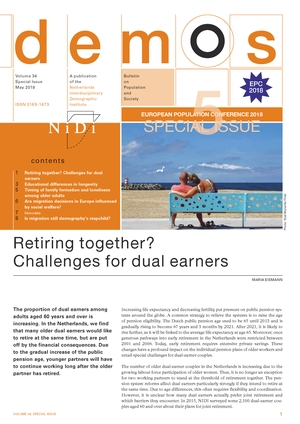JOOP DE BEER & NICOLE VAN DER GAAG
Individuals with lower levels of education have significantly higher mortality risks than those with higher levels of education. The most recent figures in the Netherlands show an educational difference in life expectancy at birth of 6.5 years for males and 5.4 for females. This gap is linked to differences in lifestyles, in living and working conditions, and in the use of healthcare. Compared to the higher educated, the lower educated more often smoke, suffer more from obesity, live in worse housing environments and more often work under hazardous circumstances. We compared differences in longevity for lower and higher educated males (see box). We focus on men since their educational differences tend to be larger than among women.
In 2013-2016 life expectancy at birth for lower educated men amounted to 76.8 years, while highly educated men could expect to live on average 83.3 years. This difference is partly due to more premature deaths among the lower educated men, i.e. a higher risk of dying before the age of 65, and partly to lower rates of survival to old age. Mortality below age 65 accounts for an educational difference of 2.8 years, i.e. 42 per cent of the total difference in life expectancy at birth (see Figure 1). This difference is quite persistent and has hardly changed since the turn of the century. Even though the probability of dying before age 65 has substantially decreased among men with a low education level (from 22% to 13%), it is still higher than among highly educated men (decline from 16% to 7%; see Figure 2). One explanation for the decrease in premature deaths among both lower and higher educated men is better medical treatment of cardiovascular disease. Two thirds of the decline in deaths under age 65 are due to the sharp decline in cardiovascular mortality.

The decrease in the educational gap in life expectancy from 7 years in 1997-2000 to 6.5 years in 2013-2016 is mainly caused by a decrease in the difference in the rates of survival in old age. Today, more than half of the men with low education levels will reach at least the age of 80, which is almost similar to highly educated men in 1997- 2000 (see Figure 2). Thus, lower educated men almost bridged the gap that existed at the turn of the century. But since the survival of higher educated men has also increased further, a considerable educational gap remains.

The persistence of the educational gap in life expectancy is not caused by a stagnation in the rates of survival among men with a low level of education, but rather by the increase in longevity among highly educated men. Despite a considerable increase in longevity, lower educated men are still lagging behind many years. A further reduction in the educational gap in survival to old age can only be achieved if either the improvement among men with low education accelerates even more, or the improvement among highly educated men slows down. Needless to say, no one would aim for the latter possibility. However, lower educated men can catch up through declines in premature deaths. If men with a low educational level succeed in reaching the same level of survival before the age of 65 as highly educated men today, they will gain another 2.8 years in life expectancy at birth. The survival of highly educated men below the age of 65 can also improve, but their room for improvement is limited. They can gain at most 2.5 years, but only if none of them die before the age of 65, which is highly unlikely, if not impossible.
Joop de Beer, NIDI, email: beer@nidi.nl
Nicole van der Gaag, NIDI, email: gaag@nidi.nl


